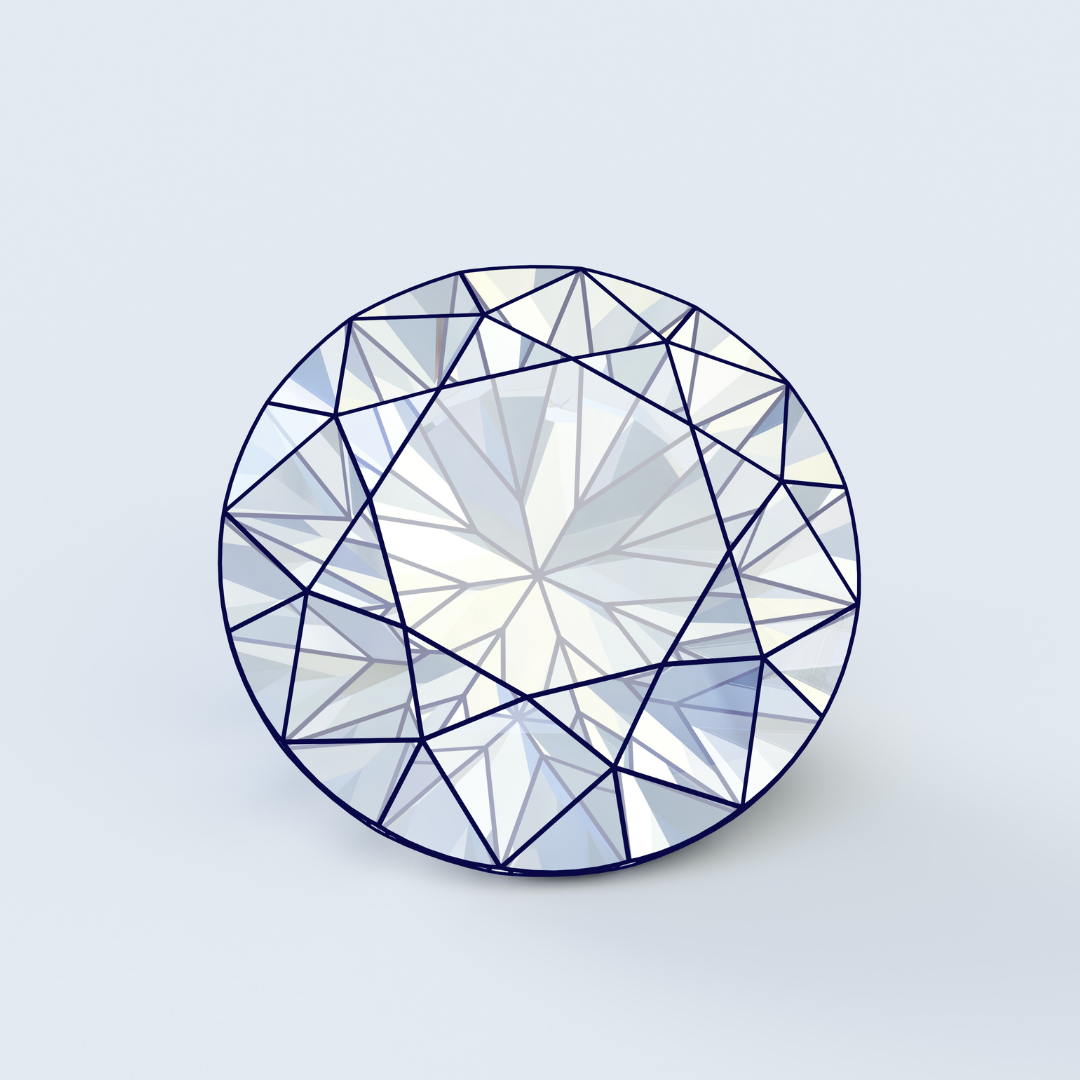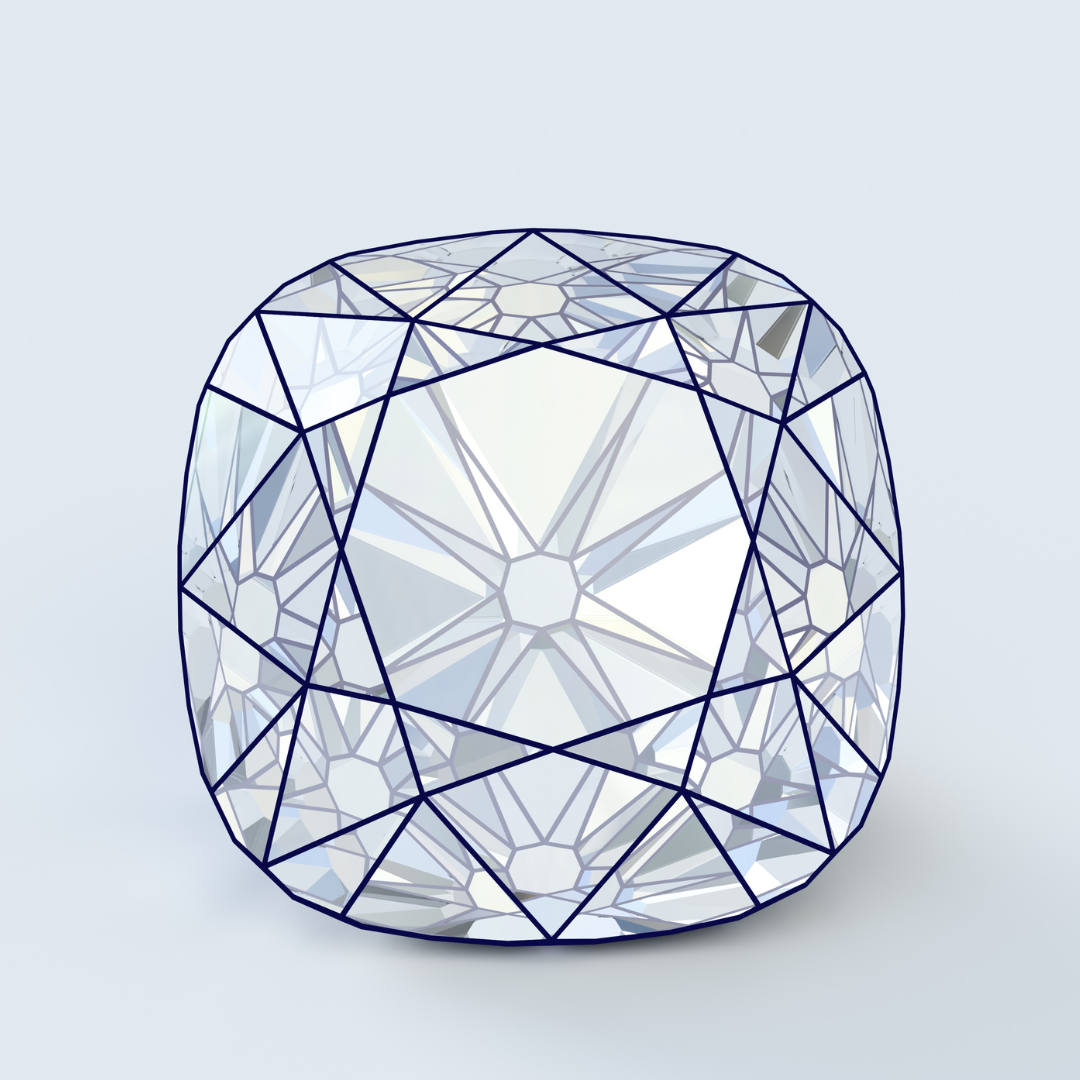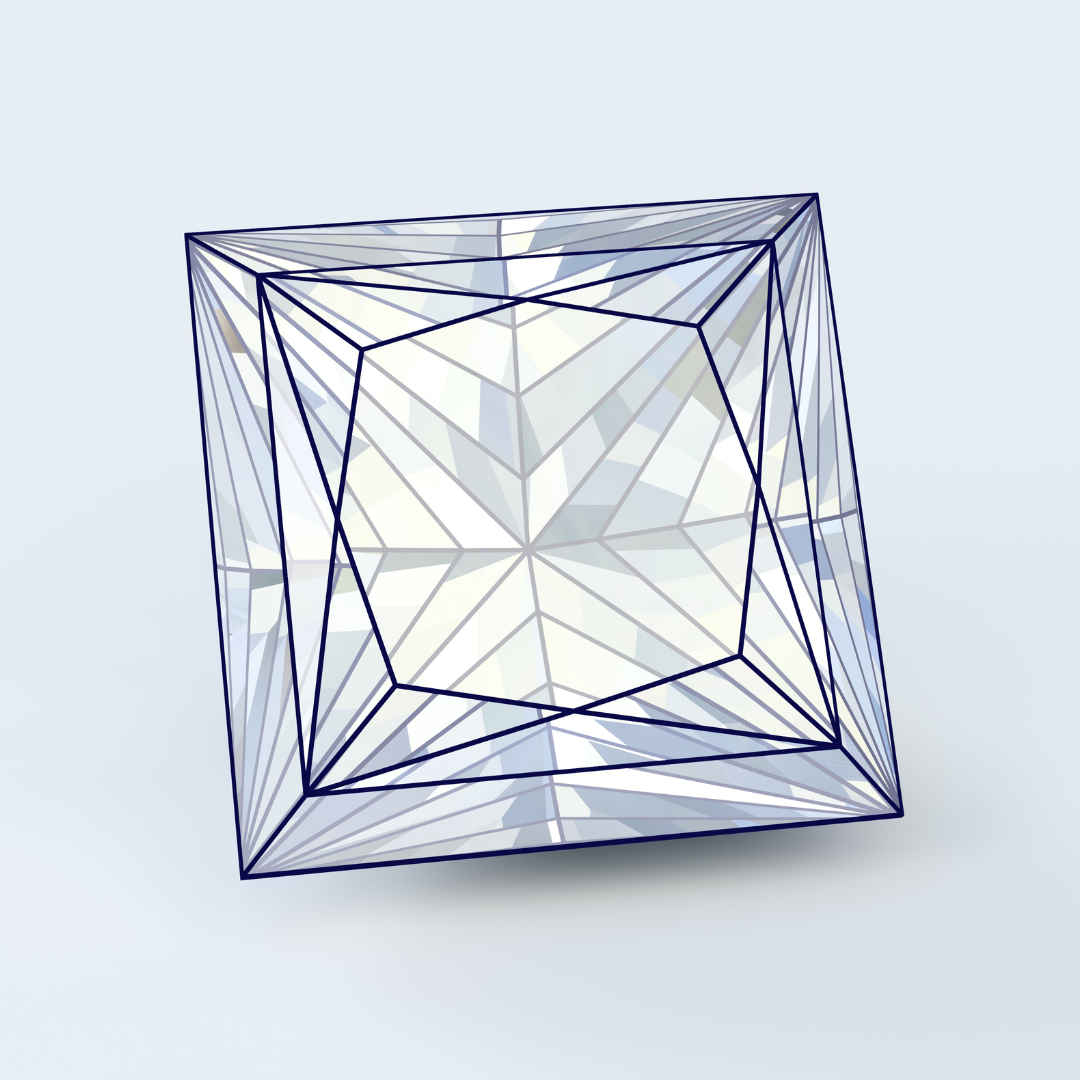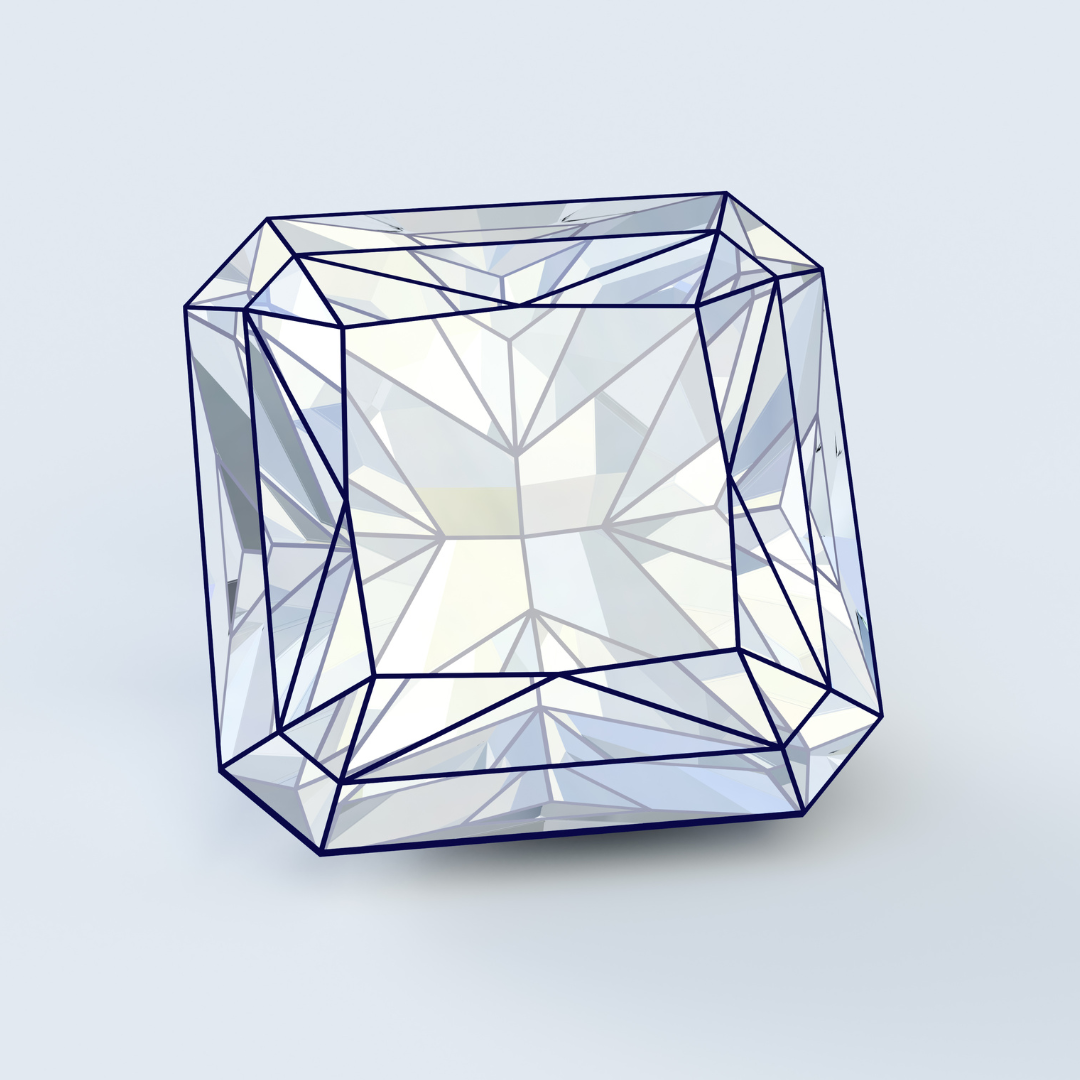16 Popular Diamond Cuts
Choosing a diamond cut is a major aspect of choosing a diamond engagement ring and with so many different types of cuts available, it can be overwhelming. Let’s explore the most popular diamond cuts and their unique characteristics. Diamond cuts are usually divided into two categories: the round cut diamond also known as the brilliant cut diamond, and the fancy cut diamond, which includes all other diamond cuts. While the round brilliant cut is the most popular cut, fancy cuts like princess, cushion, oval, pear and marquise have their own distinct appeal and have gained popularity in recent years. The choice of cut depends entirely on personal preference and the desired appearance of the diamond. Understanding the differences will help you choose the perfect diamond that suits your personal taste and style.
Round Brilliant Cut
The Round Brilliant Cut is the most popular and widely used diamond cut and is known for its unparalleled brilliance and fire. It has 57 or 58 facets and is the classic round shape. It has perfect symmetry and its facets are arranged in such a way that it maximizes light reflection and sparkle. Its timeless shape and versatility make it an excellent choice for any style of engagement ring, from classic solitaires to more elaborate halo designs.
Princess Cut
The Princess Cut is a square or rectangular cut with sharp edges and corners, giving it a modern and contemporary look. It has an intense sparkle, thanks to its unique combination of step-cut and brilliant-cut facets. Princess-cut diamonds are known for their versatility, as they can look stunning in both solitaire settings or surrounded by smaller accent stones. It's a great choice for those who want a diamond with a lot of shine without sacrificing on shape.
Cushion Cut
The Cushion Cut is a square or rectangular cut with rounded corners and a larger surface area. It has a pillow-like appearance and is known for its vintage look and soft, warm sparkle. This cut has been around for over 200 years and was popular in the 19th century. It has since made a comeback and is a popular choice, especially with those who want a vintage or antique appearance. It can also look great in modern settings.
Oval Cut
The Oval Cut is an elongated shape with soft, rounded edges, giving it a classic and elegant look. It has a high level of brilliance and fire and is similar to the round brilliant cut in terms of sparkle. However, its unique elongated shape offers a twist to the classic round shape. It is a great option for those who want something a little bit different but still timeless. The Oval Cut is versatile and looks beautiful in various settings, from solitaires to three-stone rings.
Pear Cut
The Pear Cut resembles a teardrop, with one rounded end that gracefully tapers to a point at the other end. Also known as the Teardrop Cut, it combines the elegance of the marquise cut with the brilliance of the round cut. Its unique shape elongates the finger and adds a touch of sophistication. It is a great choice for someone who wants a diamond that is both classic and distinctive.
Marquise Cut
The Marquise Cut is a long, narrow shape with pointed ends. It elongates the finger and gives it a regal appearance. This cut has been around for centuries and was popular in the 18th century. It is a great choice for those who want a diamond that stands out and has a vintage feel. The Marquise Cut looks beautiful in various settings, from solitaires to more elaborate settings.
Emerald Cut
The Emerald Cut is a rectangular shape with a step cut crown, creating a hall of mirrors effect. It has a high level of clarity and is perfect for those who want to showcase the diamond’s clarity and color. The Emerald Cut is known for its clean lines and understated elegance. The long straight facets create a more subtle sparkle. This cut also has a vintage feel that harkens back to the Art Deco era. It looks great in solitaires and vintage-inspired settings.
Asscher Cut
The Asscher cut is a square-shaped diamond with cropped corners and stepped facets that resemble the emerald cut. It is similar to the emerald cut in terms of showcasing clarity and color, but offers a unique square shape. The cut was first produced in the early 1900s, and has a classic and timeless appeal. It is a popular choice for vintage and Art Deco-style engagement rings.
Baguette Cut
The Baguette Cut is a step cut that features a long and rectangular shape with straight edges. It has 14 facets and is often used as accent stones to complement other larger center stones. The baguette cut is known for its clean lines and simple design, and its small size makes it a budget-friendly option. It is a versatile choice for engagement rings and wedding bands, as it can be used to create geometric patterns and interesting textures.
Trilliant Cut
The Trilliant Cut, also known as the Trillion Cut, is a triangular-shaped diamond cut that has a brilliant cut style. It has 31 or 50 facets, depending on whether the diamond has curved or straight edges. The trilliant cut is known for its fire and brilliance and is often used as side stones in engagement rings. The unique and elegant shape of the trilliant cut makes it a popular choice for those looking for a modern and unconventional diamond.
Old European Cut
The Old European cut is an antique cut that was popular in the 19th and early 20th centuries. It has a different shape and faceting than modern round brilliant cuts, with a smaller table, higher crown and bigger culet. It has 58 facets with a smaller number of larger facets that reflect light in a unique way, creating a soft, romantic sparkle. While not as popular as it once was, this cut is still sought after by those who appreciate its vintage charm and character.
Old Mine Cut
The Old Mine Cut is an antique cut that was popular in the 18th and 19th centuries. A forerunner to modern cushion cut diamonds, it has a more rounded shape and a higher crown, creating a greater depth and smaller table. It offers a different sparkle with lower brilliance but higher fire. The cut is often used on diamonds with a yellowish tint for a warm, romantic glow. Antique old mine cut diamonds are highly sought after for their old-world charm.
Rose Cut
The Rose Cut is an antique diamond cut that dates back to the 16th century. It was widely used in the Georgian and Victorian eras for engagement rings. Rose cut diamonds have a single flat facet on the top and a concave pavilion on the bottom. This cut is not as popular as it used to be, but it is still used in some jewelry designs and is known for its unique, vintage look and historical significance.
French Cut
The French Cut is a variation of the baguette cut and features a square or rectangular shape with beveled edges and a flat top. It is designed to highlight the clarity and color of the diamond, rather than its brilliance. French cut diamonds are often used as accent stones in engagement rings. They have a smaller table than traditional baguettes, which makes the diamond look bigger.
Tapered Baguette Cut
The Tapered Baguette Cut is a variation of the baguette cut with a tapered shape. The cut features step-cut facets on the crown and pavilion that create a rectangular shape with a narrower end. The tapered baguette is often used as side stones in engagement rings. The cut's elongated shape allows it to complement other diamond shapes, particularly round or oval cuts.
Square Cut
The Square Cut and the Princess Cut are often used interchangeably, but there are some differences between them. The Princess Cut has pointed corners while the Square cut has straight corners. The Square Cut is commonly used as a side stone in engagement rings and is cut in a simple, faceted style to provide a classic, timeless look that complements the main stone.
Dive deeper into the world of jewelry
Be sure to visit the blog. Get fascinating insights straight from experts around the world and pick up secret tips to make jewelry shopping a breeze.



















When it comes to choosing an engagement ring, the shape of the center stone plays a significant role in defining its overall appearance. Two popular options are the round brilliant cut engagement ring and the princess cut engagement ring. Let’s examine the features of both shapes closely to help you make your decision.